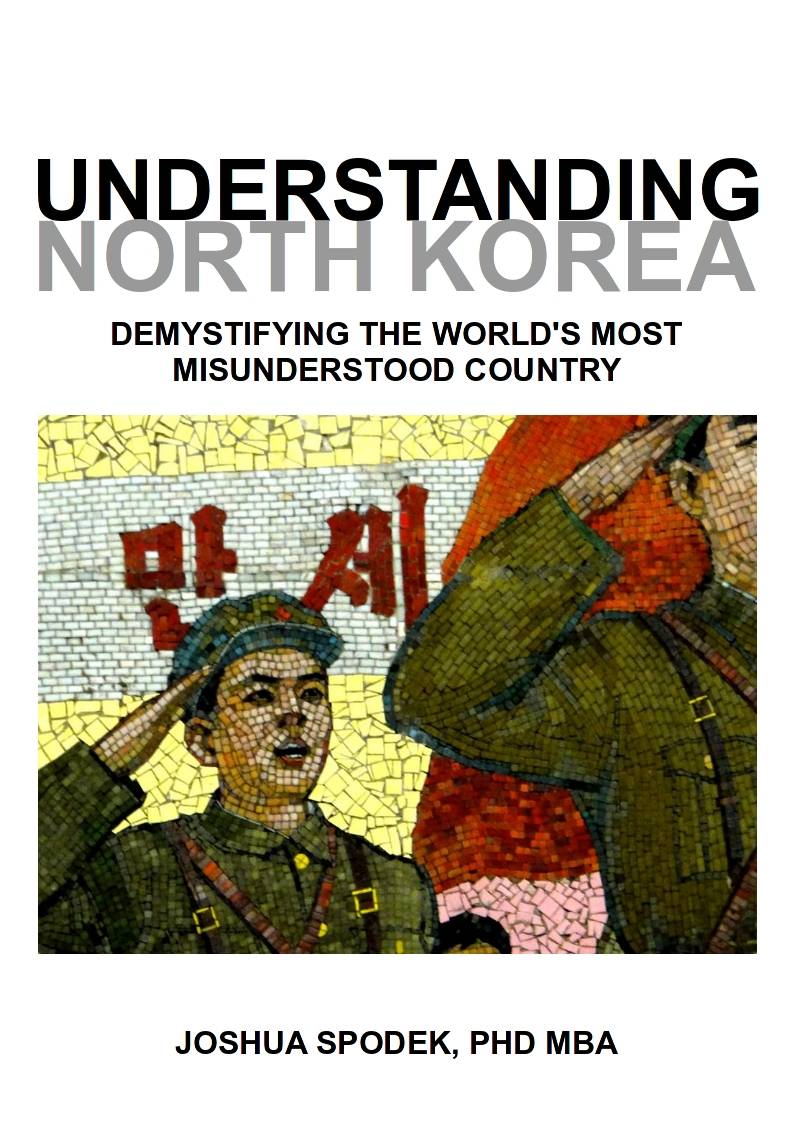I’m using the lens of business strategy to understand the North Korean government’s strategy. That lens applies, partly because of the similarities between business and political competition, but mostly because North Korea’s situation is so simple. The three main relevant factors in competitive strategy are
- Keeping out competition — to have a sustainable competitive advantage — dominates strategy.
- Dominating geographically is often an effective strategy for a sustainable competitive advantage.
- Customer captivity is another effective strategy for a sustainable competitive advantage.
What is a sustainable competitive advantage? This value investing site put it succinctly for businesses
A sustainable competitive advantage is the ability for a business to do something that its (potential) rivals cannot. It means being able to:
- Keep the business’s current customers; and,
- (Possibly) grow by attracting new customers;
- On terms which are more profitable than the business’s competitors;
- For a reasonably long-time (it is sustainable not temporary).
Translating from business lingo to political, the “business” is the North Korean government. Its “customers” are citizens who comply with its system. Rivals and competitors are other political parties, citizens promoting other systems, or foreign powers.
Everything you need to know about North Korean government strategy
The past few posts, summarized above, tell us everything we need to know about the North Korean government’s highest motivation — its strategy — for every choice its decision-makers make. It will never do anything to weaken the following two conditions.
First, stability. The North Korean government dominates any potential competition geographically. It only borders three countries. It heavily arms its border with potential competitor, South Korea. Its border with Russia is small and unimportant. It provides great value to China in buffering it from the United States’ presence in South Korea. The next closest country is Japan, and it effectively arms that border by firing missiles toward Japan.
Second, loyalty, or in the language of Competition Demystified, customer captivity. The North Korean government keeps its citizens loyal — or its customers captive — through several tactics, for example,
- It prevents citizens from leaving.
- It teaches them histories about the world, North Korea, and North Korean leaders conducive to liking the North Korean government and disliking the rest of the world.
- It restricts the flow of contradictory information into the country.
- It rewards people for supporting it.
- It corporeally (and capitally) punishes citizens who don’t support it.
The North Korean government’s highest priority is to maintain its geographical dominance and customer captivity. Doing so maintains the decision makers’ health and well-being. They’ve seen what happens to overthrown leaders enough to know that not doing so risks their deaths. It’s that simple.
By the way, if you haven’t noticed, I’m not trying to say what I consider right, wrong, good, bad, or evil. I’m only describing the situation and incentives as I see them.
Examples
Much of what the North Korean government does seems odd to most. Through the lens above, everything falls into place.
Examples of maintaining stability, or geographic dominance:
- Keeping the border with South Korea closed
- Maintaining defenses to make invasion too costly for would-be invaders
- Maintaining China as an ally
- Threatening South Korea to keep the United States there, which maintains support from China
- Developing nuclear weapons strengthen its borders
- Appearing irrational enough to use weapons that would result in their own deaths strengthens the credibility of their threats (like a game of chicken)
Examples of maintaining customer captivity
- Keeping information from the outside world out
- Creating histories and personas for its leaders
- Creating harsh punishments for defecting or disagreeing
- Rewarding loyalty
Note things that don’t factor in or contradict the above
- Accepting food or other aid, even in times of famine, can undermine customer captivity, so would only be accepted by decision-makers if their own supplies were threatened or the aid were anonymous.
- Human rights of its citizens do not factor in at the strategic level except if they conflict with customer captivity.
- Relations with the rest of the world do not factor in.
Some other odd effects
- North Korea benefits from the United States presence in South Korea because it makes them important to China. Threatening South Korea forces the United States to stay and protect South Korea, which makes North Korea more valuable to China.
- North Korea has no incentive to expand its borders.
- North Korea has little incentive to improve its economy.
- North Korea has little problem with interacting with “enemies” like the United States and South Korea, as long as those relations don’t affect its borders and customer captivity.
- The North Korean government doesn’t care if the rest of the world thinks it or its leaders are weird.
Next: From the North Korean leaders’ perspective
—
EDIT: I included much of this post and this series on strategy (edited and polished) in my ebook, Understanding North Korea: Demystifying the World’s Most Misunderstood Country. I wrote the book to help increase understanding, communication, and freedom.


Pingback: North Korea strategy: the players and their motives | Joshua Spodek
Pingback: North Korea strategy: preview | Joshua Spodek
Pingback: North Korean Strategy: what won’t change things | Joshua Spodek